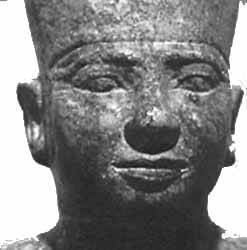Died 2350 BC | Parents Sesheshet | |
 | ||
Reign 2345–2333 BC (6th Dynasty) Consort Iput I, Khuit, Khentkaus IV Children Pepi I Meryre, Tetiankhkem, Seshseshet Idut Grandchildren Merenre Nemtyemsaf I, Neith, Iput II, Hornetjerkhet Similar Pepi I Meryre, Merenre Nemtyemsaf I, Unas, Ankhesenpepi II | ||
Pharaoh teti saqqara egypt
Teti, less commonly known as Othoes, was the first Pharaoh of the Sixth dynasty of Egypt and is buried at Saqqara. The exact length of his reign has been destroyed on the Turin King List, but is believed to have been about 12 years.
Contents
Biography
Teti had several wives:
Teti is known to have had several children. He was the father of at least three sons and probably ten daughters. Of the sons, two are well attested, a third one is likely:
According to N. Kanawati, Teti had at least 9 daughters, by a number of wives, and the fact that they were named after his mother, Sesheshet, allows to trace his family. At least three princesses bearing the name Seshseshet are designated as "king’s eldest daughter", meaning that there were at least three different queens. It seems that there was a tenth one, born of a fourth queen as she is also designated as "king’s eldest daughter".
Another possible daughter is princess Inti.
During Teti's reign, high officials were beginning to build funerary monuments that rivaled that of the Pharaoh. His vizier, Mereruka, built a mastaba tomb at Saqqara which consisted of 33 richly carved rooms, the biggest known tomb for an Egyptian nobleman. This is considered to be a sign that Egypt's wealth was being transferred from the central court to the officials, a slow process that culminated in the end to the Old Kingdom.
Manetho states that Teti was murdered by his palace bodyguards in a harem plot, but he may have been assassinated by the usurper Userkare. He was buried in the royal necropolis at Saqqara. His pyramid complex is associated with the mastabas of officials from his reign. Teti's Highest date is his Year after the 6th Count 3rd Month of Summer day lost (Year 12 if the count was biannual) from Hatnub Graffito No.1. This information is confirmed by the South Saqqara Stone Annal document from Pepi II's reign which gives him a reign of around 12 years.
3rd "subsidiary" pyramid to Teti's tomb
Teti's mother was the Queen Sesheshet, who was instrumental in her son's accession to the throne and a reconciling of two warring factions of the royal family. Sesheshet lived between 2323 BC to 2291 BC. Egypt's chief archaeologist Zahi Hawass, secretary general of the Supreme Council of Antiquities, announced, on November 11, 2008, that she was entombed, in a 4,300-year-old headless 5 metre (16-foot-tall) Saqqara most complete subsidiary pyramid. This is the 118th pyramid discovered thus far in Egypt, the largest portion of its 2 metres wide beautiful casing was built with a superstructure 5 metres high. It originally reached 14 metres, with sides 22 metres long.
Once 5 stories tall, it lay beneath 23 feet (7 meters) of sand, a small shrine and mud-brick walls from later periods. The 3rd known "subsidiary" pyramid to Teti's tomb, was originally 46 feet (14 meters) tall and 72 feet (22 meters) square at its base, due to its walls having stood at a 51-degree angle. Buried next to the Saqqara Step Pyramid, its base lies 65 feet underground and is believed to have been 50 feet tall when it was built.
